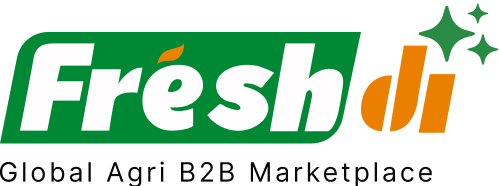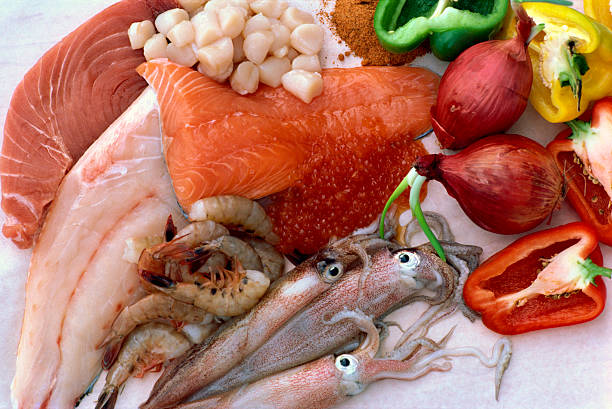Introduction – The Current State of Play: Brazil’s Turbulent Seafood Sector
If you’re keeping an eye on Brazil’s seafood industry in 2025, you’re probably feeling the waves of change crashing in. The sector is in the middle of a storm — not just metaphorically, but quite literally too. From trade wars to climate chaos, things are shifting quickly, and businesses sourcing from Brazil need to stay sharp, agile, and informed.
Let’s start with the biggest headline: in August 2025, the U.S. slapped a whopping 50% tariff on Brazilian seafood exports. That’s no small hit — it affects around $400 million in annual trade and 70% of Brazil’s fish export market. The fallout? Exporters are scrambling, jobs are at risk (we’re talking 20,000 people), and the industry’s now knocking on the government’s door for a 900 million reais ($165 million) lifeline.
But there’s a silver lining. China, locked in its own tariff war with the U.S., is now looking at Brazil as its new seafood partner. That shift is driving up Brazilian exports to China, but it also stirs worries about rising domestic prices.
On top of that, a global shortage of refrigerated containers — thanks to booming beef exports — is putting the squeeze on seafood logistics. Add extreme weather into the mix, and you get a volatile stew of risks and opportunities.
So, where does this leave you as a buyer or importer? It’s clear: adaptability is your best friend, and staying plugged into verified platforms like Freshdi can help you navigate these choppy waters with real-time market data, verified supplier listings, and RFQ trends at your fingertips.
Deep Dive – What’s Making Headlines in Brazil’s Seafood Market?
Let’s unpack the biggest developments shaping Brazil’s seafood industry in 2025:
-
U.S. Tariff Blowback: That 50% tariff didn’t just ruffle feathers — it reshaped the export landscape. Brazilian companies are now turning to alternative markets and pleading for government support. (Reuters)
-
China’s Growing Appetite: With U.S. seafood off the table, China is turning to Brazil, pushing demand higher. But that means local prices are starting to rise, and food inflation is becoming a real concern. (Reuters)
-
Logistics Bottlenecks: The reefer container shortage is causing delays and headaches. Shippers are juggling port schedules and rerouting cargo to avoid spoilage and loss. (GlobalF)
-
Climate Chaos: Heatwaves and erratic rainfall are messing with supply chains and harvests. The food-at-home inflation rate jumped 1.34% in December 2024, and food prices are expected to climb further in 2025. (Tridge)
-
New Market Opportunities: Vietnam is making major moves in Brazil. Exports reached $130 million in 2024, largely thanks to pangasius. Vietnam is now Brazil’s second-largest seafood supplier — a sign of shifting dynamics. (Baird Maritime)
Top 3 Verified Seafood Suppliers in Brazil – Adapting to Today’s Market
Amidst all the noise, some suppliers are standing tall — flexible, reliable, and globally connected. Based on feedback and analytics from Freshdi, here are the Top 3 Seafood Suppliers in Brazil in 2025:
1. Associacao Tsurah LLC
Associacao Tsurah LLC is a standout in Brazil’s seafood export scene. Known for consistency, high-quality frozen seafood, and strong logistics capabilities, they’ve managed to maintain stable operations even amid tariff disruptions.
- Strong presence in Asian markets
- Reliable cold-chain infrastructure
- Compliance with international food safety standards
2. AGROPECUARIA ESTRELA LTDA
AGROPECUARIA ESTRELA LTDA has quickly become a go-to for buyers looking for volume, reliability, and traceability. They’ve leaned into digital tools and are actively using Freshdi to respond to RFQs and market signals.
- HACCP certified
- Exporter of choice for both frozen and live seafood
- Active adaptation to new EU market standards
3. Dice Import Export Consultancy Ltda
Dice Import Export Consultancy Ltda is more than a supplier — they’re a logistics-savvy partner. They specialize in navigating complex freight routes, making them ideal during this reefer container crunch.
- Strong partnerships with shipping lines
- Specializes in high-demand species like shrimp and lobster
- Responsive to market changes and buyer needs via platforms like Freshdi
Dynamic Ranking Note
Keep in mind, rankings like these can shift quickly. Freshdi regularly updates supplier performance through their “Suppliers of the Month/Quarter” feature — reflecting real-time data like fulfillment rates, RFQ response speed, and buyer satisfaction. So, always check back for the latest movers and shakers in Brazil’s seafood scene.
Market Navigation – Strategic Responses to Today’s Seafood Landscape in Brazil
So, how should businesses respond to all this turbulence?
First, diversify your supplier base. Don’t rely on a single exporter or port. The reefer shortage and weather disruptions mean flexibility is king.
Second, re-evaluate your logistics strategy. Work with suppliers like Dice Import Export Consultancy Ltda who are seasoned in navigating freight bottlenecks.
Third, keep an eye on pricing trends. Rising domestic prices in Brazil could impact export costs. Tools on Freshdi like real-time RFQ tracking help you stay ahead of shifting price points.
And finally, explore new seafood types. With pangasius imports rising from Vietnam, it’s clear there’s demand for alternatives. You might want to pivot toward species with more stable supply chains or stronger profit margins.
Conclusion – Key Takeaways for Businesses in a Rapidly Evolving Market
Let’s recap:
- U.S. tariffs have rocked Brazil’s seafood industry, shrinking its traditional export markets.
- China’s demand is providing a lifeline, but it comes with local inflation risks.
- Logistics are strained, especially due to reefer container shortages.
- Extreme weather is hurting production and transportation reliability.
- New suppliers and markets (like Vietnam) are reshaping the landscape.
In this environment, buyers must be more informed than ever. Platforms like Freshdi offer critical tools — from supplier verification to live RFQ insights — that help businesses adapt quickly, safely, and profitably.
✅ Seafood Buyer’s Checklist for 2025
- 🔎 Verify supplier certifications and capabilities on Freshdi
- 📦 Check reefer availability and shipping timelines
- 📊 Monitor global tariff and trade updates
- 🌍 Diversify sourcing regions within Brazil
- 📈 Track product-specific demand and pricing trends
🚀 Looking Ahead: The Future of Brazil’s Seafood Market
Adaptability will remain the name of the game. As Brazil works to reopen the EU market and deepen ties with Asia, exporters that invest in quality, logistics, and digital tools will dominate. For buyers, staying close to smart platforms like Freshdi means you’re never caught off guard.
Whether you’re a first-time importer or a seafood sourcing veteran, 2025 is the year to sharpen your strategy and ride the waves with smarter tools and stronger partners.
FAQs
1. Why did the U.S. impose a 50% tariff on Brazilian seafood in 2025?
The U.S. cited trade protection policies and alleged quality control issues. The move severely impacted Brazil’s seafood export economy.
2. How is China’s demand affecting Brazilian seafood prices?
With China increasing imports from Brazil due to its trade war with the U.S., demand is spiking — and that’s pushing up local prices in Brazil.
3. What seafood types are most affected by logistics disruptions in Brazil?
Frozen and live seafood like shrimp, lobster, and tilapia are hardest hit due to reefer container shortages and port delays.
4. How can I find reliable seafood suppliers in Brazil?
Platforms like Freshdi provide verified supplier listings, certification details, RFQ tools, and real-time market trends to help buyers connect with trusted exporters.
5. Are there opportunities for new suppliers in Brazil’s seafood market?
Absolutely. With traditional markets shifting and new trade routes opening, agile suppliers — especially those with strong logistics and compliance — are well-positioned to grow.
References
- Reuters: Brazil’s fish industry hit with 50% U.S. tariff
- Reuters: Tariffs to drive up seafood prices in the U.S.
- Reuters: Brazil braces for more Chinese demand
- GlobalF: Reefer availability strain in 2025
- Tridge: Heat impacts on fresh product sales
- Baird Maritime: Vietnam’s seafood success in Brazil
Ready to ride the waves of Brazil’s seafood market? Stay connected, stay informed, and let Freshdi be your compass.


